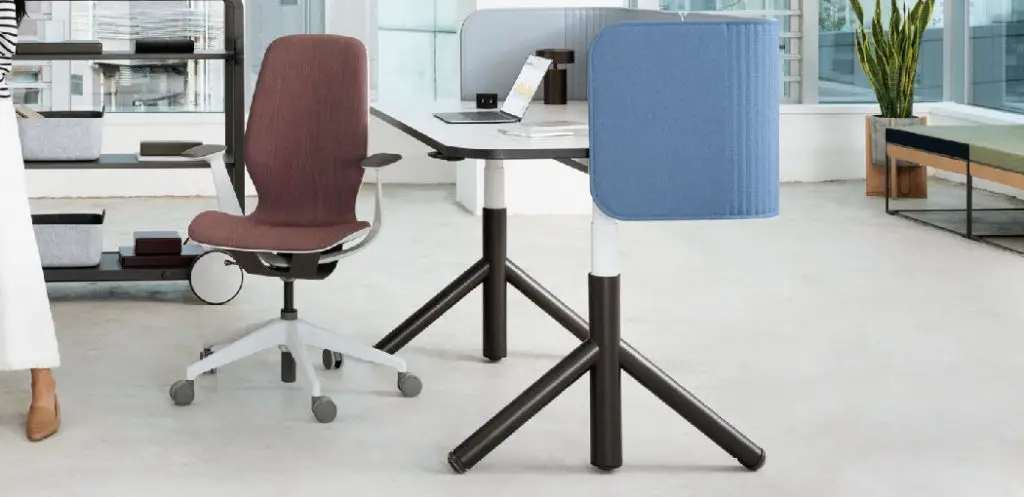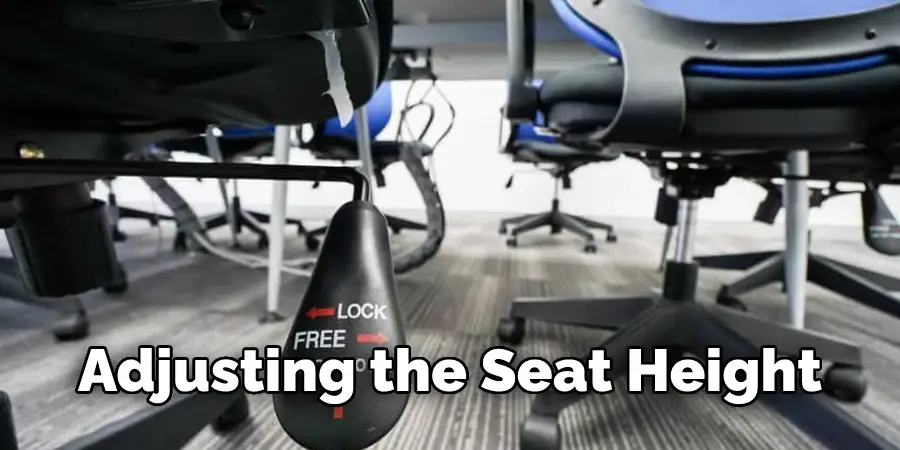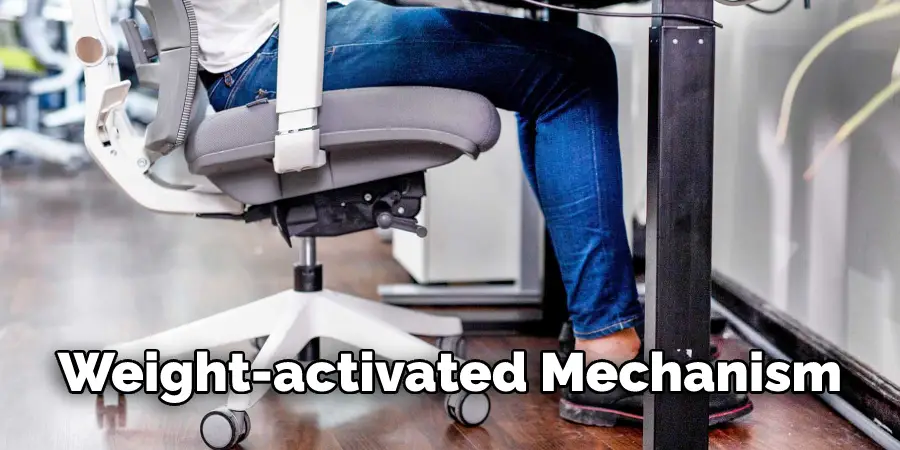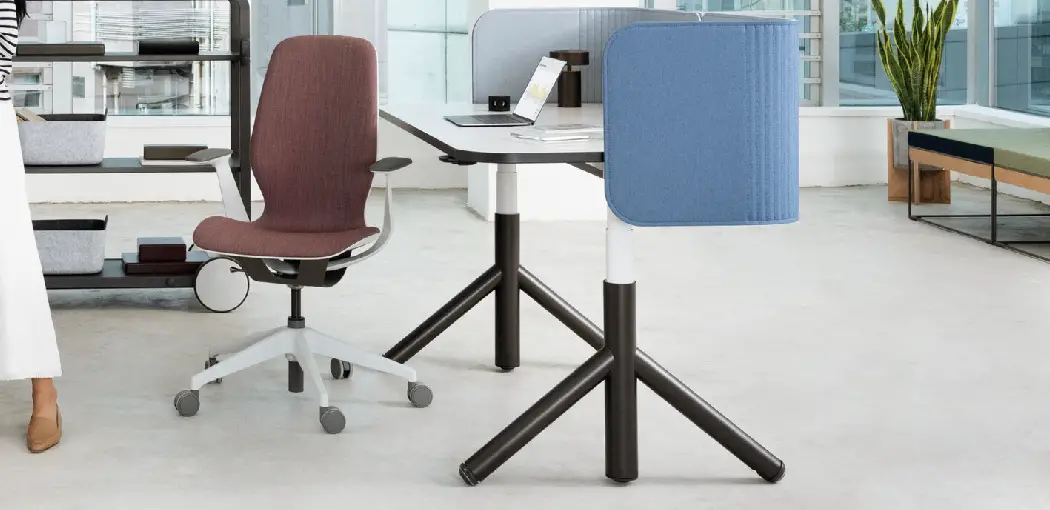Have you ever wondered what that knob under your office chair is for? While it might seem like a random, insignificant piece of furniture, the twist knob has a critical function. In this article, we’ll explore what is the twist knob under office chair and how to use it properly. So, if you’re curious about this little-known feature of office chairs, keep reading!

Office chairs are designed to be comfortable and supportive. But they also need to be adjustable to accommodate different users. The twist knob is one of the ways that chairs can be adjusted. Many people don’t know what it’s for, but it’s a crucial part of the chair. It’s used to adjust the tension of the backrest. If you’ve ever felt like your office chair was too soft or too hard, the tension wasn’t adjusted properly. The twist knob is there to fix that.
A Detailed Guide on What Is the Twist Knob Under Office Chair
The knob under an office chair is typically used to adjust the tension of the chair’s springs. This allows the user to make the chair more or less firm, depending on their preference. The tension adjustment can also fix a sagging seat or make the chair easier to roll. In some cases, the knob may also adjust the seat’s height.
Though it may seem like a small detail, the ability to customize the comfort of an office chair can make a big difference in overall productivity. By finding the perfect setting, workers can help ensure that they are comfortable and focused throughout the day.
For those unfamiliar with the term, an office chair is designed for use in an office setting. Office chairs typically have several features that set them apart from other chairs, such as ergonomic designs, adjustable heights, and lumbar support. Many office chairs also have wheels, making it easy to move around the office. The twist knob under an office chair is usually located on the underside of the seat, near the base.

Chair adjustment is one of the most important things to consider when purchasing an office chair. Adjusting the seat height, backrest, and armrests can mean the difference between a comfortable chair that promotes good posture and an uncomfortable chair that leads to back pain and poor posture. In addition, many chairs come with a twist knob under the seat that controls the tension of the springs, which controls how easily the chair reclines.
While this knob is essential for adjusting the chair to your body weight and comfort level, it can also be a source of frustration if it’s constantly coming loose or getting stuck.
Here are a few common knobs under the office chair:
Chair Tilt Tension:
Chair tilt tension is the knob under your office chair that controls the amount of pressure required to lean back in your chair. If the tension is too loose, you will lean back too quickly and put a strain on your back. On the other hand, it won’t be easy to lean back if the tension is too tight. The sweet spot is somewhere in the middle, where you can lean back with ease without putting strain on your back.
To use the chair tilt tension, adjust the knob until you find the perfect tension. Once you have found the proper tension, it is essential to lock the knob in place so that it doesn’t accidentally get moved and change your settings.
Height Adjustment Lever:
The height adjustment lever is a knob or handles located under the seat of an office chair that, when turned, raises or lowers the height of the chair. This is important because it allows the user to customize the fit of the chair to their own body, ensuring both comfort and proper ergonomics. Many chairs also have a weight-activated mechanism that locks the height in place once set so that the chair does not accidentally slip down or become too high for the user.
To adjust the height of your chair, start by sitting in it and finding the height adjustment lever. It is usually located on the right-hand side of the chair, near the base. Once you have found it, twist it to unlock the mechanism. Then, use your feet to push down on the gas lift until the seat is at the desired height. Once you’ve found your perfect spot, twist the lever back to lock it in place.
If your chair does not have a height adjustment lever, or if you are having trouble finding it, consult your chair’s manual for instructions on how to adjust the height.

Some chairs also have a weight-activated mechanism that locks the height in place once set so that the chair does not accidentally slip down or become too high for the user.
Back Height Adjustment:
The back height adjustment is a knob that is located under the seat of your chair. This knob controls the height of your chair’s backrest.
If you find that your backrest is too low or too high, you can use this knob to adjust it to a more comfortable position. It is also helpful to recline your chair further back or bring it forward.
To adjust the back height, first, locate the knob under the seat of your chair. Then, twist it to the left or right to raise or lower the backrest. You should feel the backrest move as you turn the knob.
Once you have found a comfortable position, tighten the knob so that the backrest stays in place. If the knob is too loose, the backrest may move around and become uncomfortable.
The back height adjustment knob is there to help you find a comfortable position for your back. If you are having trouble finding a comfortable position, this knob can be adjusted to help you.
Seat Angle Adjustment:
It allows you to adjust the angle of your seat. This comes in handy if you want to recline back further or sit up straighter. Many people find that they can get a more comfortable position by making this adjustment.
Most office chairs have a seat angle adjustment lever located under the right side of the seat. To raise or lower your chair, lean forward and find this lever. Push down to lower the seat and pull up to raise it. You can also adjust the tension of your chair with this lever. Turning it clockwise will make it harder to lean back in your chair while turning it counter-clockwise will make it easier. Experiment until you find the perfect setting for you.
You don’t need this knob, but it may come in handy depending on your chair and how you like to sit in it. If you are constantly adjusting your seat angle, then this knob may be worth considering. Otherwise, you can probably get by without it.
Seat Depth Adjustment:
The seat depth adjustment is a feature on many office chairs that allows the user to customize the depth of the chair’s seat. This is important for two reasons: first, it will enable the user to find a position that is comfortable for them, and second, it helps to prevent back pain by ensuring that the user is sitting in a position that supports their back.
The seat depth adjustment is usually controlled by a knob or lever located under the chair’s seat. The user turns the knob or levers to adjust the depth until they have found a comfortable position.
The seat depth adjustment is an essential feature on many office chairs because it allows users to customize the chair to their own body. This is important because every person’s body is different, and what may be comfortable for one person may not be comfortable for another. By adjusting the seat depth, users can find a position that is comfortable for them, which can help prevent back pain. In addition, this will help in what is the twist knob under office chair.
What Are the Parts of a Desk Chair Called?
The desk chair is an essential piece of furniture for any office or workspace. Though its design may vary depending on the manufacturer, all desk chairs share certain common parts. The base is the chair’s foundation, and it is typically made from metal or plastic. The base supports the chair’s mechanism, which allows the user to adjust the height and tilt of the seat.
The seat is the part of the chair designed to be sat on, and it is usually upholstered in fabric or leather. The backrest supports the back and shoulders, and it can be adjustable or fixed in place. Finally, the armrests provide support for the arms and help to reduce fatigue when sitting for long periods. When purchasing an office chair, it is essential to consider the height of the seat, the width of the backrest, and the type of armrest that will best suit your needs.
How to Fix an Office Chair That Leans Back?
A comfortable office chair is essential for working long hours at a desk, but it can be quite frustrating if the chair leans back uncontrollably. A leaning office chair is uncomfortable and a safety hazard, as it can cause injury or accidents. Fortunately, fixing an office chair that leans back is a straightforward process that does not require any special tools or skills.
Here are some steps to follow:
- Check the Chair’s Tilt Mechanism: The tilt mechanism is responsible for both the tilt and the tension of the chair. If it is loose or damaged, it can cause the chair to lean back uncontrollably. Check if it is tightened or if any parts are damaged.
- Adjust Tension Control: If the chair has a tension control knob, tighten it to make the chair more upright. If it is too tight, loosen it to allow the backrest more play.
- Check the Backrest: If the backrest of your chair is not secure, it can cause the chair to lean back. Check if the screws that connect the backrest to the seat are loose, and tighten them if needed.
- Adjust Lumbar Support: Some office chairs have lumbar support. If the lumbar support is pushing you forward, it can cause the chair to lean back. Adjust it accordingly to your comfort level.
Following these steps, you can fix almost any leaning office chair, making it more comfortable and safer. However, if you are unable to fix the chair yourself, seek help from a professional.
What Does the Tilt Tension Adjustment Knob Do?
The tilt tension adjustment knob is a feature common on office chairs that allow the user to adjust the resistance of the chair’s backrest when leaning back. The knob is usually located under the seat and can be turned either clockwise or counterclockwise to modify the tension on the tilt mechanism.
When the tension is increased by turning the knob clockwise, the backrest will become more difficult to lean back in, providing more support and stability for the user’s back. This is useful for people who prefer a firmer chair or who need more back support while working.
On the other hand, when the tension is decreased by turning the knob counterclockwise, the backrest becomes easier to lean back in, providing a more relaxed and comfortable seating experience. This may be preferred by people who like to recline while working or who suffer from back pain and need a less restrictive chair.
What Does Tilt Lock Mean?
A tilt-lock is a function on some office chairs that allows the user to lock the chair upright. This can be useful if you need to take a break from sitting or if you need to get up from the chair for any reason. To activate the tilt lock, push down on the lever located on the side of the chair. This will cause the chair to tilt back and lock into place. To deactivate the tilt lock, pull up on the lever. This will allow you to return the chair to its normal position. A tilt-lock is a handy feature to help you stay comfortable while working at your desk.
Conclusion:
So, there you have it, what is the twist knob under office chair. The twist knob found on the underside of office chairs is not just a design feature – it has a real purpose! By twisting the knob, you can adjust the height of your chair to ensure that you are sitting in the most comfortable position possible. Now that you know this handy little secret be sure to give the twist knob a try next time you’re settling into your office chair for a long day of work.
You may read also How to Fix Peeling Leather Office Chair

